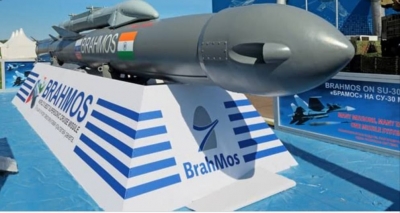Jairam Ramesh highlights governance continuity in BrahMos missile development
By IANS | Updated: May 12, 2025 16:17 IST2025-05-12T16:14:30+5:302025-05-12T16:17:38+5:30
New Delhi, May 12 Congress General Secretary (Communications) Jairam Ramesh on Monday underlined the importance of continuity in ...

Jairam Ramesh highlights governance continuity in BrahMos missile development
New Delhi, May 12 Congress General Secretary (Communications) Jairam Ramesh on Monday underlined the importance of continuity in governance for the successful development of the BrahMos missile system, calling it a prime example of sustained national effort across multiple governments.
In a post on X, Ramesh drew attention to the recent prominence of BrahMos, a long-range ramjet supersonic cruise missile, which was likely used extensively during Operation Sindoor, launched in response to the Pahalgam massacre.
“BrahMos is very much in the news these days. It is named after the Brahmaputra and Moskva rivers and stands as a shining symbol of Indo-Russian collaboration,” Ramesh wrote.
“It is also yet another remarkable proof of continuity in governance -- something that simply cannot be denied or erased, no matter how frequently today's ruling establishment in New Delhi tries to do so.”
Tracing the missile’s development over decades, Ramesh outlined key milestones achieved under successive Indian governments.
“India’s Integrated Missile Development Programme began in 1983 and witnessed many successes. In the mid-1990s, A.P.J. Abdul Kalam and his colleague Sivathanu Pillai identified the need for collaboration with Russia to develop supersonic cruise missile technology,” he said.
An inter-governmental agreement to co-develop the missile was signed on February 12, 1998, when I.K. Gujral was the Prime Minister. “Incidentally, Gujral had served as India’s Ambassador to the USSR between 1976 and 1980,” Ramesh noted.
He further pointed out that the first formal contract was signed on July 9, 1999, during Atal Bihari Vajpayee’s tenure as Prime Minister, and the missile’s first successful launch occurred on June 12, 2001.
“The BrahMos headquarters complex in New Delhi, encompassing design, simulation, and aerospace research facilities, was inaugurated by Russian President Vladimir Putin on December 4, 2004,” Ramesh added.
Ramesh also detailed the progressive induction of BrahMos into the Indian armed forces -- into the Navy in 2005, the Army in 2007, and the air-launched variant in 2012, all during Manmohan Singh’s tenure as Prime Minister.
“It was under Singh’s leadership that the historic Indo-US nuclear agreement was signed in 2005, paving the way for India’s eventual entry into the Missile Technology Control Regime in 2016,” Ramesh said.
He credited Singh’s government with establishing key facilities such as the BrahMos Integration Complex in Hyderabad and BrahMos Aerospace Thiruvananthapuram Limited.
Ramesh’s comments came a day after Defence Minister Rajnath Singh virtually inaugurated a new BrahMos Integration and Testing Facility in Lucknow.
At the event, Singh lauded the missile as “not just one of the world’s fastest supersonic cruise missiles, but a message of the strength of the Indian Armed Forces, a message of deterrence to adversaries, and a message of the nation’s unwavering commitment to safeguarding its borders.”
Disclaimer: This post has been auto-published from an agency feed without any modifications to the text and has not been reviewed by an editor
Open in app